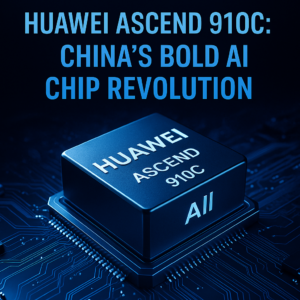AMD’s Strategic Move: Acquiring ZT Systems to Enhance AI Capabilities
Advanced Micro Devices (AMD) has announced its acquisition of ZT Systems for $4.9 billion, marking a significant step in bolstering its artificial intelligence hardware portfolio. This strategic move aims to enhance AMD’s competitiveness against industry leader Nvidia, particularly in the AI landscape.
In the fast-paced realm of technology, strategic acquisitions can redefine market dynamics. Advanced Micro Devices (AMD), a prominent player in the semiconductor industry, has recently made headlines with its announcement to acquire server manufacturer ZT Systems for a staggering $4.9 billion. This bold move is not just about expanding AMD’s portfolio; it is a calculated strategy to enhance its capabilities in artificial intelligence (AI) and challenge the supremacy of Nvidia.
As AI continues to emerge as a critical driver of innovation across various sectors, the demand for powerful hardware that can handle complex computations is surging. AMD’s acquisition of ZT Systems positions the company to tap into this growing market effectively. ZT Systems is known for its expertise in building high-performance servers optimized for AI workloads, making it an attractive addition to AMD’s existing lineup.
The current landscape is dominated by Nvidia, which has established itself as a leader in AI hardware with its specialized graphics processing units (GPUs). These GPUs are crucial for training machine learning models and running AI applications efficiently. By acquiring ZT Systems, AMD aims to close the gap and offer competitive alternatives to Nvidia’s offerings.
This acquisition is expected to bolster AMD’s capabilities in several key areas:
- Enhancing AMD’s server product portfolio, allowing the company to deliver integrated solutions that cater specifically to AI workloads.
- Accelerating the development of next-generation AI chips that meet the demands of enterprises increasingly reliant on AI technologies.
- Leading to innovative solutions that promote efficiency and performance in cloud computing environments.
As businesses shift towards cloud-based AI solutions, the need for robust server infrastructure becomes paramount. AMD’s strategic acquisition places it in a prime position to capitalize on this shift.
However, the journey will not be without challenges. AMD must ensure a seamless integration of ZT Systems into its operations, aligning their technology and team culture to drive innovation. The competitive landscape is also evolving rapidly, with other players like Intel and emerging startups vying for market share in AI hardware. AMD’s ability to navigate these challenges will determine the success of this acquisition.
In conclusion, AMD’s acquisition of ZT Systems is a strategic maneuver aimed at strengthening its position in the AI hardware market. By enhancing its server capabilities and addressing the growing demand for AI solutions, AMD is setting the stage for a more competitive future. As the AI revolution unfolds, this acquisition could prove to be a pivotal moment in AMD’s journey, allowing it to challenge Nvidia’s dominance and establish itself as a formidable force in the industry.


